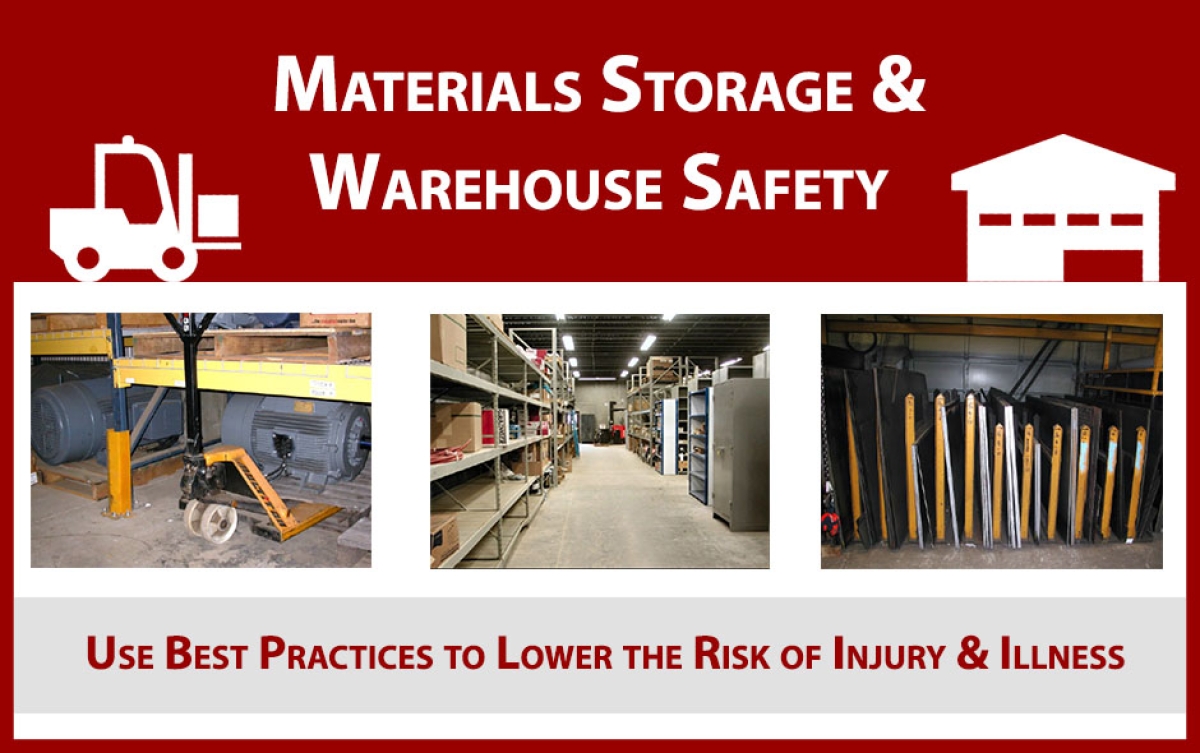Miners working in warehouses are exposed to hazards that can result in traumatic injuries, musculoskeletal disorders or illnesses from exposure to harmful chemicals. Storing, handling and transporting materials around and inside warehouses can be hazardous work, but maintaining focus on safe job procedures and complying with standards in 30 CFR Part 56 and Part 57 will lower the risks associated with working in a warehouse on mine property. By following best practices, mine operators and miners can lower the risk of injury or illness.
Best Practices
- Examine the warehouse on each working shift. Repair or correct any unsafe equipment or conditions.
- Establish safe procedures to accomplish warehouse tasks before beginning work.
- Identify and eliminate or control all hazards associated with the work to be performed.
- Miners must be trained on the task to be performed.
- Delivery workers must receive site-specific training unless accompanied by an experienced miner.
- Do not assign a person to work alone in areas where hazardous conditions could endanger employee safety, and account for everyone at the end of the shift.
- Wear appropriate personal protective equipment, such as a hard hat, safety shoes, gloves and glasses.
- Provide and maintain clean, clear access to warehouses, storage areas and stored materials.
- Keep aisles, travelways and exits clear and free of slip, trip and strike-against hazards.
- Store flammable, combustible and hazardous materials in a way that minimizes the dangers.
- Organize and label storage areas so parts and materials can be quickly located without searching.
- Store materials and supplies in an organized manner to ensure easy access for retrieval and transportation.
- Place heavier loads on lower or middle shelves.
- Store long, tall or top-heavy items on their side or secure them to prevent tipover.
- Place ladders on stable, level surfaces, and use stair platforms to access materials in higher locations.
- Lift materials properly. Bend your knees, keep your back straight, hold the load close to your body, maintain a clear vision path and turn your feet and whole body together (never twist at your waist).
- To the extent feasible, lift and handle loads in the body’s “power zone”: between knees and shoulders.
- Use powered equipment such as a forklift or hydraulic fork jack instead of manually lifting heavy materials.

